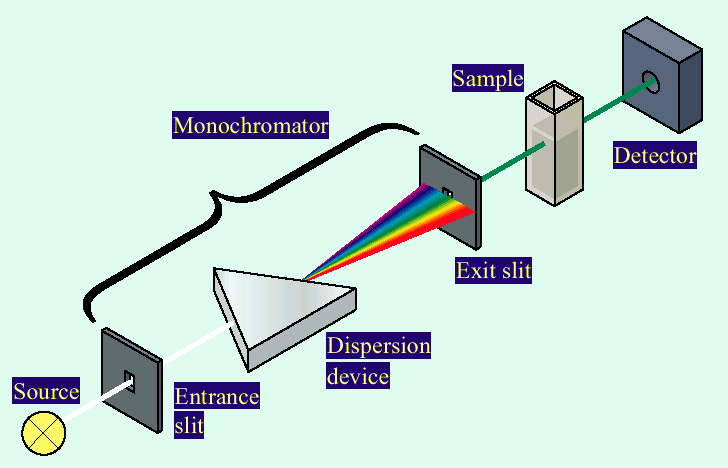How does a spectrophotometer function?

There are two basic designs for a typical dispersive type spectrophotometer, the single beam and the double beam type instrument.
The term dispersive indicates that the instrument “disperses” white light with either a prism or diffraction grating monochromator.
There are four basic components to a simple single beam UV/Vis spectrophotometer; a light source, a monochromator, a sample, and a detector.
The monochromator of the instrument is composed of an entrance slit (to narrow the beam to a usable size), a dispersion device (usually a diffraction grating or prism that separates polychromatic white light into bands of monochromatic light of a single wavelength), and an exit slit (to select the desired monochromatic wavelength).
The figure in this slide shows a simple single beam optical design for a UV/Vis instrument.


